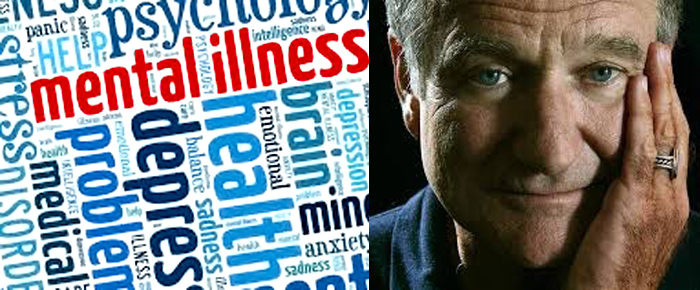
By Haddon Libby
The loss of Robin Williams last week brought a new spotlight to the issue of mental health.
It is estimated that 30,000 Americans take their lives in this manner annually with more than half occurring amongst men between the ages of 25 and 65. Nearly 4.5 million Americans have survived a suicide attempt. The strongest risk factor amongst all who go down this dark path is depression. Along with Robin Williams, 16 million Americans currently suffer. Another high risk factor is prior substance abuse – a condition Williams had lived with for decades. Given that Robin Williams had some financial problems, career setbacks and the recent diagnosis of Parkinson’s Disease he was at a substantially heightened risk of suicide.
According to the National Institute of Mental Health, nearly one in five Americans suffer a mental illness with 22% being women and 15% being men. This excludes Americans suffering from alcohol or drug abuse. The Center for Disease Control believes that one in four Americans suffer from mental illness with half of all people experiencing a mental health episode at least once during their lives. Amongst children, 46% are expected to experience a mental health issue at some point in their lives with 21% expected to have a severe disorder that will inhibit their life’s function.
The World Health Organization has reported that four of the top ten causes of disability in the United States relate to mental illness. Globally, mental health issues are the leading disability ahead of diseases like cancer and heart disease. Within five years, it is expected the major depressive illnesses will be the leading cause of disability for women and children worldwide.
In the United States alone, it is estimated that untreated mental illness costs the economy $100-200 billion annually. Untreated illness can cause unemployment, homelessness, substance abuse, incarceration and suicide.
Anxiety disorders are the most common disorders striking Americans. In any given year, 18% of Americans suffer an anxiety disorder with women 60% more likely than men. Only one-third of those suffering receive any form of treatment.
States with the highest level of depression are typically states in the south like Louisiana, Alabama, Mississippi and Arkansas while many of the northern states like Montana, North Dakota and Minnesota have the lowest levels of mental illness.
Early diagnosis is one of the most effective ways to treat the illness. Pharmacotherapy, psychotherapy and psychosocial rehabilitation are the most effective forms of treatment. Pharmacotherapy is the use of drugs in the treatment of disorders. Psychotherapy is essentially talk therapy while psychosocial rehabilitation finds ways to reintroduce the mentally ill person back into society in a manner that affords the effective person maximum independent functionality.
The problem of untreated mental illness treatment is highest amongst people who are 60 years of age or older. Only about 7% of these Americans receive some form of psychiatric service while it is estimated that at least 25% of these older Americans need help.
One of the primary reasons for a failure to treat such illnesses is the way that healthcare is delivered to many. It falls upon a primary care physician to spot mental health problems to then convince the patient or their loved ones that treatment is needed. Given that many mental healthcare treatments are not supported by healthcare plans, treatment is less likely for those on fixed or limited incomes. Additionally, the stigma associated with receiving mental healthcare tends to cause many people to ‘tough it out’ and try to deal with their mental health issues unassisted.
Treat your mental health that that of those around you like a physical or eye exam. See a specialist at least annually for a personal mental health assessment. You may not realize how much of a difference this could make in your life or those of people you care for.








































